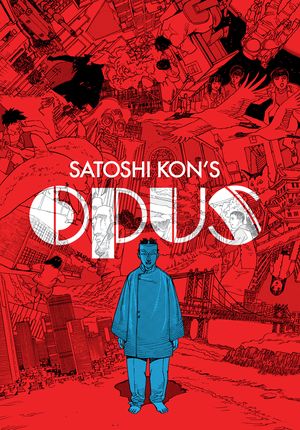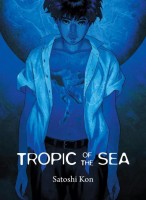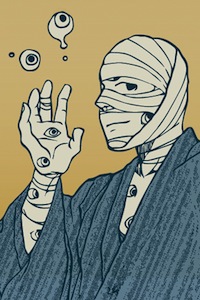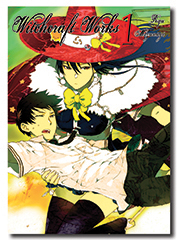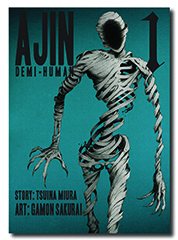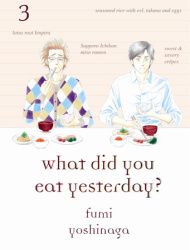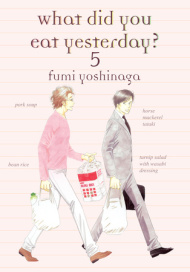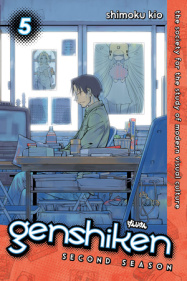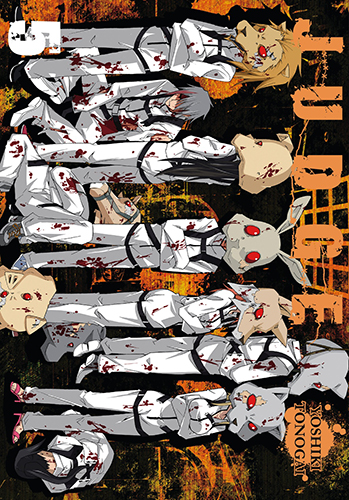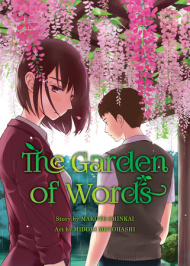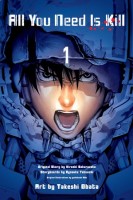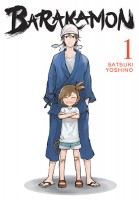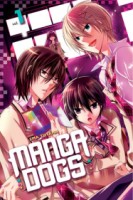File this week’s Bookmarked! column under the heading Better Late Than Never. Brigid and I sat down this week to review our favorite manga of 2014, from swashbuckling Viking sagas to goofy shojo comedies. We also chatted about the series we thought we’d love but didn’t, and looked ahead to potential candidates for the Best Manga of 2015.
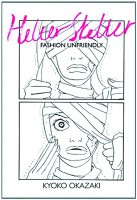 Brigid: When I was compiling my best of the year list for Robot 6, I mentioned three manga—Kyoko Okazaki’s Helter Skelter, Moyoco Anno’s In Clothes Called Fat, and Inio Asano’s Nijigahara Holograph—but I’m smacking my head because I somehow spaced on Vinland Saga. Even though Kodansha Comics has temporarily put the series on hold, it’s well worth a read. It’s a really well done story with a complex plot—lots of double-crosses and surprises—and some interesting characters. It’s also beautifully drawn, and Kodansha Comics has gone the extra mile in terms of production quality, with double-size hardback volumes and some little touches that make it feel really special. I simply disappeared into these books over the Fourth of July, and now I want to go back and read all the way through Volume Five.
Brigid: When I was compiling my best of the year list for Robot 6, I mentioned three manga—Kyoko Okazaki’s Helter Skelter, Moyoco Anno’s In Clothes Called Fat, and Inio Asano’s Nijigahara Holograph—but I’m smacking my head because I somehow spaced on Vinland Saga. Even though Kodansha Comics has temporarily put the series on hold, it’s well worth a read. It’s a really well done story with a complex plot—lots of double-crosses and surprises—and some interesting characters. It’s also beautifully drawn, and Kodansha Comics has gone the extra mile in terms of production quality, with double-size hardback volumes and some little touches that make it feel really special. I simply disappeared into these books over the Fourth of July, and now I want to go back and read all the way through Volume Five.
Kate, what was your standout pick for the year?
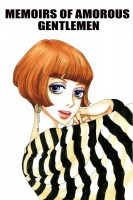 Kate: I’m also a Moyocco Anno fan, though I preferred Memoirs of Amorous Gentleman. I found Anno’s depiction of Colette, the prostitute-heroine of Memoirs, less mean-spirited than her depiction of Noko, the binge-eating heroine of In Clothes Called Fat; when I read Noko’s story, I had a difficult time distinguishing the author’s feelings about Noko from the other characters’. The other reason I liked Memoirs better: the artwork! The story takes place in a fin-de-siecle brothel in Paris, which provides Anno with a swell excuse to draw extravagant clothing, accessories, and lingerie. Her attention to detail doesn’t end with the clothing, either; the character designs are more soft and sensual than in her earlier series like Flowers & Bees.
Kate: I’m also a Moyocco Anno fan, though I preferred Memoirs of Amorous Gentleman. I found Anno’s depiction of Colette, the prostitute-heroine of Memoirs, less mean-spirited than her depiction of Noko, the binge-eating heroine of In Clothes Called Fat; when I read Noko’s story, I had a difficult time distinguishing the author’s feelings about Noko from the other characters’. The other reason I liked Memoirs better: the artwork! The story takes place in a fin-de-siecle brothel in Paris, which provides Anno with a swell excuse to draw extravagant clothing, accessories, and lingerie. Her attention to detail doesn’t end with the clothing, either; the character designs are more soft and sensual than in her earlier series like Flowers & Bees.
Other titles making my best-of list would include Batman: The Jiro Kuwata Batmanga, which DC Comics has presented in a smart-looking, unflipped edition; Master Keaton, an older Naoki Urasawa title about a globe-trotting, crime-solving insurance agent; My Love Story!!, a goofy shojo comedy that offers a teenage boy’s perspective on first love; and OPUS, a manga-within-a-manga by the late animator Satoshi Kon. Honorable mention goes to the final volume of Thermae Romae, which managed to wring a surprising amount of story from a slender premise.
If you could only pick one of the titles from your list as “the best manga of 2014,” which one would it be?
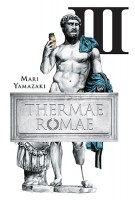 Brigid: I think Vinland Saga truly was the best manga of the year, but let me go back to your honorable mention of Thermae Romae. It’s hard to give that the best-manga tag, because the art is a bit odd and the story wobbled all over the place, yet there’s something really wonderful about that manga. I think it reflects our own reality in a way, because just like Lucius, we are taking artifacts from Japanese culture and making them our own—only for us, it’s manga, not bathrooms. I thought this was an amazing series and kudos to Yen Press for publishing it in such a beautiful edition.
Brigid: I think Vinland Saga truly was the best manga of the year, but let me go back to your honorable mention of Thermae Romae. It’s hard to give that the best-manga tag, because the art is a bit odd and the story wobbled all over the place, yet there’s something really wonderful about that manga. I think it reflects our own reality in a way, because just like Lucius, we are taking artifacts from Japanese culture and making them our own—only for us, it’s manga, not bathrooms. I thought this was an amazing series and kudos to Yen Press for publishing it in such a beautiful edition.
Attack on Titan hardly needs a boost from me, but I have to say it was one of the series I turned to when I just wanted to relax and enjoy a good story. I also really liked Nisekoi in the same way—it’s not deep, just a fun read.
Were there any series you were reading just for fun?
Kate: VIZ tends to be my go-to label for fun series. I already mentioned My Love Story!!, which usually makes me laugh out loud, but I also enjoyed the first volume of Assassination Classroom. I won’t make any grand claims for Classroom; the story has a sentimental streak a mile wide, even though the premise is subversive. Koro-sensei’s preposterous assignments, dedication to his craft, and super-human grading skills, however, provide a reliable stream of chuckles even when the author loses his nerve and goes for the “awwww” moment instead of risking offense.
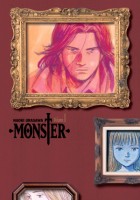 Another series in my “just for fun” pile was Naoki Urasawa’s Monster. When VIZ began reissuing Monster last year, I dusted off my old set and revisited it for the first time since 2008. I was pleasantly surprised to discover that the series was almost as good as I remembered. The crack pacing and twisty plots held my attention, as did the plight of the enormous cast of supporting characters. (And oh, those characters! No one draws a nose, a brow, or a paunch with the same elan as Urasawa.) The only thing that disappointed was the ending, which felt more suitable for an episode of Scooby-Doo than the conclusion of a thriller exploring the underbelly of the former Soviet bloc.
Another series in my “just for fun” pile was Naoki Urasawa’s Monster. When VIZ began reissuing Monster last year, I dusted off my old set and revisited it for the first time since 2008. I was pleasantly surprised to discover that the series was almost as good as I remembered. The crack pacing and twisty plots held my attention, as did the plight of the enormous cast of supporting characters. (And oh, those characters! No one draws a nose, a brow, or a paunch with the same elan as Urasawa.) The only thing that disappointed was the ending, which felt more suitable for an episode of Scooby-Doo than the conclusion of a thriller exploring the underbelly of the former Soviet bloc.
I was certain that Fumi Yoshinaga’s What Did You Eat Yesterday? would be on my “fun” list, too, but I’ve found it oddly unengaging. The problem, for me, lies with the ratio of interpersonal to culinary shoptalk. Though Shiro and Kenji’s travails as a middle-aged couple are compelling, the endless panels of recipes, food preparation, and grocery shopping are too run-of-the-mill to hold my attention, even if some of the ingredients are exotic from an American’s perspective. I liken it to reading a manga about household chores: unless the character has a talking robot vacuum cleaner or uses depth charges to clear a messy bedroom, it’s hard to make such routine tasks interesting on the printed page.
What series didn’t live up to your expectations?
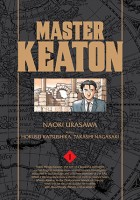 Brigid: Shockingly, Naoki Urasawa’s Master Keaton. I really loved his other series (although I agree with you about the end of Monster), so I was really looking forward to this one. The setup is great: The main character is an archaeology professor who moonlights as an insurance investigator, which gives him plenty of excuses to solve mysteries, but the plots have holes you could drive a Mack truck through. Still, Urasawa on his worst day is better than most other creators on their best. His art is great, although not quite as sophisticated as in his later books, and his lead character, who is sort of a combination of Sherlock Holmes and McGyver, is fun to watch.
Brigid: Shockingly, Naoki Urasawa’s Master Keaton. I really loved his other series (although I agree with you about the end of Monster), so I was really looking forward to this one. The setup is great: The main character is an archaeology professor who moonlights as an insurance investigator, which gives him plenty of excuses to solve mysteries, but the plots have holes you could drive a Mack truck through. Still, Urasawa on his worst day is better than most other creators on their best. His art is great, although not quite as sophisticated as in his later books, and his lead character, who is sort of a combination of Sherlock Holmes and McGyver, is fun to watch.
Another manga that I felt was solid but didn’t quite live up to its hype was Barakamon. The premise is solid: A talented calligrapher punches the wrong guy and exiles himself to a remote island to hone his craft in solitude, but the locals keep intruding into his life. The city-boy-in-the-country humor works, and Satsuki Yoshino does a nice job of establishing a sense of atmosphere with the backgrounds and settings. The weak point was the way figures were drawn—they often looked like piles of clothes with no structure underneath. Also, while I understand the decision to have the locals speak in dialect, I don’t really agree with it. It makes the story hard to read. I think this series is just hitting its stride, though, and I have the second volume queued up on my reading stack.
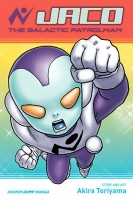 To end on an up note, though, I already have a favorite manga of 2015, and it’s one I had low expectations for: Jaco the Galactic Patrolman. It’s a one-shot by Akira Toriyama, the creator of Dragon Ball, which is not really my kind of book, so I didn’t have high expectations, but I was really impressed by the art. Toriyama knows how to set a scene, with clear lines and just the right amount of detail. All his characters looked very different, with strong personalities of their own. The plot is a ridiculous pileup, but Toriyama pulls it off, and his earnest but vain galactic patrolman is a perfect foil for the cranky Omari and the spunky Tights. (Yes, that’s her name.) There is a bit of a Dragon Ball crossover, plus a bonus Dragon Ball story at the end, but you don’t have to have read that series to enjoy this book. It was a real treat, and I highly recommend it for one of those gray winter days when you just need a laugh.
To end on an up note, though, I already have a favorite manga of 2015, and it’s one I had low expectations for: Jaco the Galactic Patrolman. It’s a one-shot by Akira Toriyama, the creator of Dragon Ball, which is not really my kind of book, so I didn’t have high expectations, but I was really impressed by the art. Toriyama knows how to set a scene, with clear lines and just the right amount of detail. All his characters looked very different, with strong personalities of their own. The plot is a ridiculous pileup, but Toriyama pulls it off, and his earnest but vain galactic patrolman is a perfect foil for the cranky Omari and the spunky Tights. (Yes, that’s her name.) There is a bit of a Dragon Ball crossover, plus a bonus Dragon Ball story at the end, but you don’t have to have read that series to enjoy this book. It was a real treat, and I highly recommend it for one of those gray winter days when you just need a laugh.
* * * * *
Now we turn the floor over to you: what were your favorite new manga of 2014? What titles disappointed you the most? Inquiring minds want to know!
